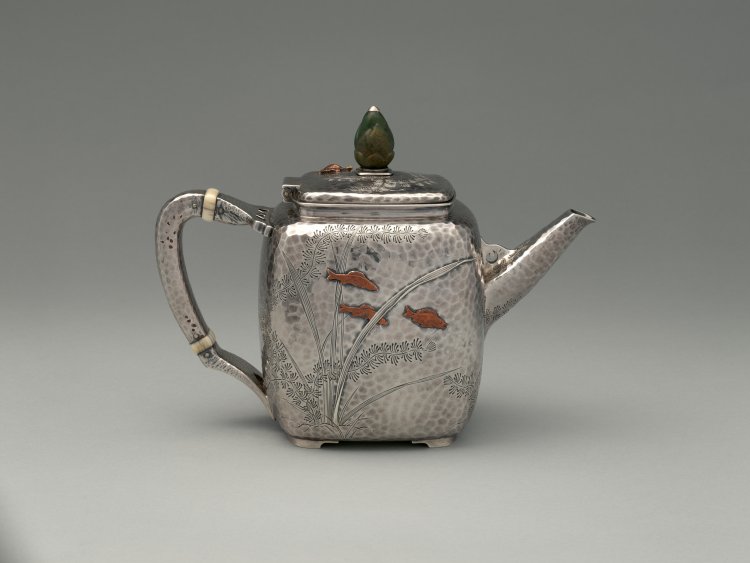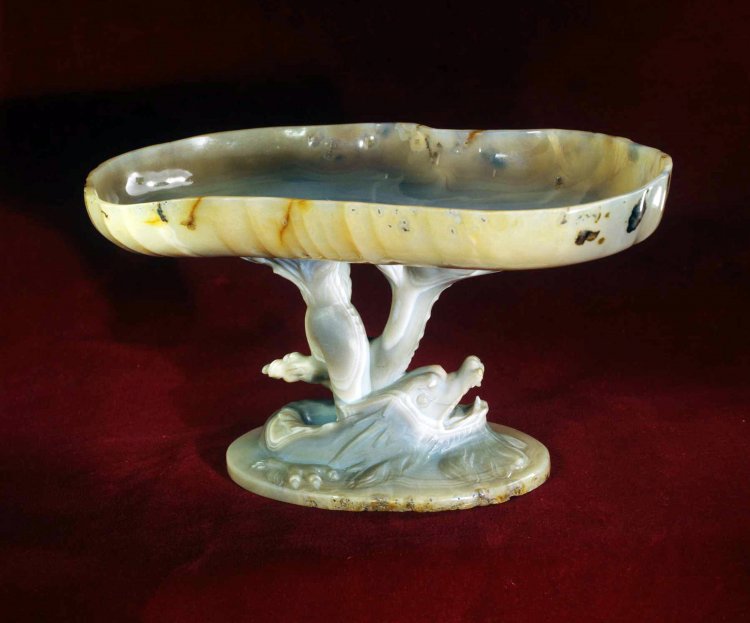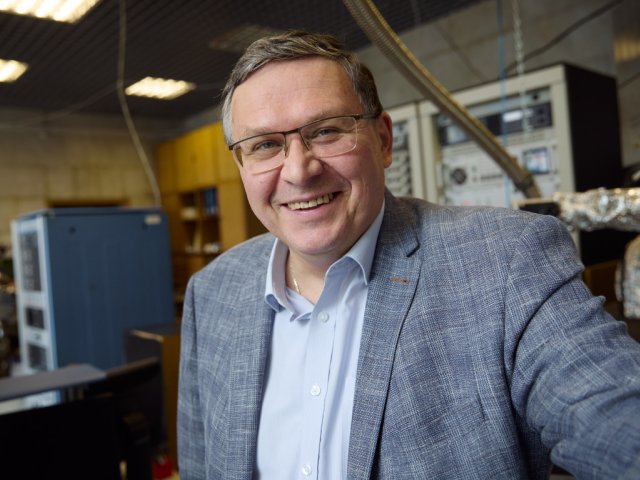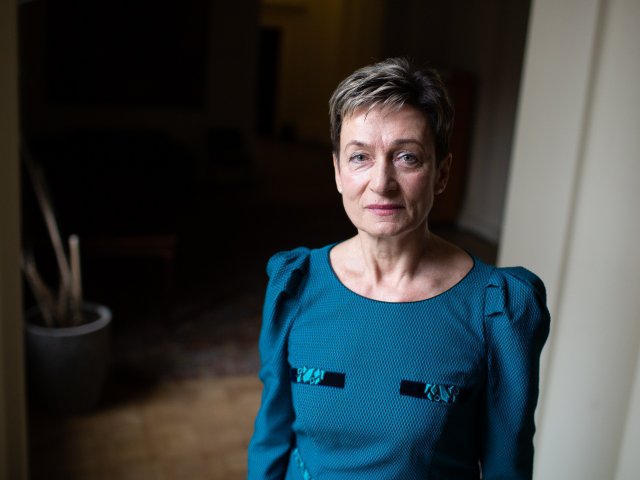To study the Far Eastern motifs in European (and Russian) decorative and applied arts, which played a role in the renewal of artistic perception – the main goal of Ekaterinburg researchers
Decorative and applied art show the viewer not only the attributes and symbols of another culture. There is a traditional worldview and perception of the people or ethnic group behind various narrative or floral ornaments and images. Europeans were always attracted by the mysterious world of the East, which opened up its new aspects of mythology, religion, philosophy, everyday life, historical, political or economic situation each time.
The artistic features of the Far East art have been organically adopted by European art. Many Western monuments were created as a result of a fascination with the artistic style of the Chinese (for example, “chinoiserie”) or Japanese (“japonisme”) tradition. Both foreign and domestic museum collections contain objects made with Oriental stylistics and artistic processing, techniques and approaches in material handling; they still attract visitors with their flair and expression.
Scientists of The Ural Federal University named after the first President of Russia B. N. Yeltsin are studying principles of representation and mechanisms of integration, artistic techniques, stylistic movements of Chinese and Japanese traditions in jewelry and stone-cutting art of Europe (including Russia) of 18th – early 20th centuries.
Sergey Evgenyevich Vinokurov – Candidate of Art, Senior Lecturer of Department of History of Art and Museology of Ural Federal University named after the first President of Russia B. N. Yeltsin, Head of Department of Decorative and Applied Arts of the Ekaterinburg Museum of Fine Arts (Ekaterinburg) – told us about the specific features and aspects of influence of Far Eastern culture on European art and presented the book about the forms of implementation of artistic principles; the book is to be published in December 2021.
“Oriental art is available today, and there are no barriers to visiting any of the countries to get a closer look at some exotic cultures. But this region is still not completely understood. The associations with the East always conjure up something bright and exuberant. We all know about dragons and pagodas with golden multi-tiered roofs, but few of us realize that this is only the tip of the iceberg. Both China and Japan have long prevented us from learning more about themselves. Japan, for example, pursued an isolationist policy. And China, as early as in the eighteenth century, formed the so-called export movement in the decorative and applied arts; so, the Europeans are given an image that is advantageous to the Chinese themselves. This is an attempt to isolate themselves from European influence, yet the demand for bright pictures, gilded complex figurines or precious porcelain creates a special type of production. The situation in Japan was similar, the reaction to Europe at different periods there was just as strong. It would be a mistake to say that some certain art has been studied completely; the same idea is true in the field of the decorative and applied arts, not everything has been studied. We learn about new movements that have not been explored before every year. Why else is it relevant? Unlike the visual arts, decorative and applied arts are very closely related to the human being and the human body. It tells us about a certain period much more than a painting. What are decorative and applied arts? Cloth, objects of porcelain and furniture, artistic bronzes and so on. It is everything a person directly interacts with all the time. It tells not only about artistic aesthetics, but also about the lifestyle. For example, early European porcelain shows us the oriental bowl and later Europeans added a comfortable handle to it,” Sergey Vinokurov pointed out the relevance of studying decorative and applied arts of the East in Russian art history.
Teapot. Tiffany & Co. Circa 1880.
In 2020 Sergey Vinokurov defended his candidate's thesis on “Far-Eastern reminiscences in the works of European jewelers and stonecutters of the second half of 19th – first third of 20th centuries”. He is specialized in cross-cultural interaction in the field of arts and crafts and the East-West problem. Due to the museum specifics and being the head of the decorative and applied arts department of the Ekaterinburg Museum of Fine Arts, the scientist supervises several areas of work: he studies the museum collection, which contains both Chinese and Japanese art works, European art collections, including works made in the “Eastern” style, and exhibition projects, where he addresses a new area (for example, studying Chinese glass of the 18–19th centuries that turned out to be not so numerous compared with porcelain, even considering private collections.)
В. Е. Dmitriev. Drawing “Vase Tsvetnik made of Kalkan jasper.” Ekaterinburg lapidary factory, 1891–1905
According to Sergey Vinokurov, the Ekaterinburg Museum of Fine Arts has a number of works of art from China, Tibet, Japan, and Mongolia, but not as many exhibits as to make up an exhibition. In this regard, specialists are engaged in seeking out private collections. For example, they actively cooperate with Oleg Malakhov, a collector from Chelyabinsk, one of the most famous collectors of Oriental art. His collection includes Japanese prints, Japanese porcelain, objects of samurai culture, Buddhist paintings and bronzes, African sculptures and masks.
I. M. Tankov. Pentos manor park of the estate of Petr Grigoryevich Demidov in Sivoritsy near St. Petersburg. Early 1790s.
What are the artistic features of the decorative and applied art of the East, particularly of the jewelry and stone-cutting art that you are researching?
“The jewelry art developed rather intensively in China, but Europeans did not understand it and were not very attracted to it, except for some collectors. In Japan, the jewelry art was not developed in the way we understand it (mainly they decorated weapons). Ceramics and porcelain were especially developed in China and later in Japan; they were marked by their national as well as philosophical and religious features. So, what seems to be a defect for Europeans, would be a distinctive feature in the East: it was important in the traditional, non-export direction of the decorative and applied arts of the Far East. In stone carving, Chinese craftsmen are known for their masterly work with nephrite. Later on, the European stone-carving art showed a peculiar taste for asymmetry that was typical of Chinese carved stone,” – Sergey Vinokurov pointed out some distinctive features.
Vase. Peterhof lapidary factory. 1889.
Is there a new wave of influence of Far Eastern motifs in the sphere of art in contemporary Russian society?
“There are several artists in contemporary ceramics who rely on the traditions of Japanese craftsmen in their work. The fashion world today often refers to Japanese costume. New trends are being developed in a variety of fields based on oriental ideas. For example, in 2000–2010, one of the most common motives was the Great Wave, which could be seen in the works of foreign and Russian fashion designers. Even the design of a special series of Kenzo perfume brand is based on the Hokusai's Great Wave,” Sergey Vinokurov responded.
Ekaterinburg scientists have received a grant from the Russian Foundation for Basic Research for the publication of the book “The Far Eastern Dream of European Masters,” which will be published in December of this year. The authors of the monograph are Sergey Evgenyevich Vinokurov and his research supervisor, a colleague from the university – a major specialist in stone-cutting art, Candidate of Art History, Associate Professor of the Ural Federal University named after the first President of Russia B. N. Yeltsin – Lyudmila Alekseyevna Budrina.
“The title is poetic and conceals quite a specific problematic: the book is devoted to the study of Far Eastern motifs in the European jewelry and stone-carving art of the second half of the 19th century – the first third of the 20th century. In this book, we take China and Japan to denote the Far East region. The book will be devoted to the study of the tools that influenced oriental motifs to penetrate so actively into the arsenal of artistic means of European stonecutters and jewelers.
Our colleagues have been studying cross-cultural relations between Europe and China and Japan for a long time, yet the decorative and applied arts, namely stone-carving and jewelry, have not been observed so thoroughly. Moreover, in contrast to our predecessors, we do not isolate Russia, but consider it a full participant in European art processes. It seems to me that we are proving convincingly that the metropolitan regions, and consequently the Urals, have been developing since the eighteenth century along the same principles and laws of art as Europe, although not without exceptions and a number of semantic footnotes,” Sergey Vinokurov commented.
The monograph will consider the characteristics of Chinese and Japanese styles and their development in the second half of the 19th – early 20th centuries in order to show that jewelry and stone-cutting art are parts of a single process. The first introductory chapter will introduce readers to the applied craftsmen who worked with artistic glass, bronze, porcelain, and furniture and turned to Far Eastern stylistics throughout the 18–19th centuries. The second chapter is devoted to the mechanisms of penetration of Far Eastern motifs on the European soil, which helped masters to get acquainted with and then allowed them to be redefined depending on the artists' interests. Here we highlight reference points, including world exhibitions, museum and private collections that formed in the 18–19th centuries, as well as active publishing activities aimed at the wide spread of knowledge and information, and influencing the artists' choice of themes, motifs, and images. The most important – the third chapter – is devoted to an analysis of the works of stonecutters and jewelers who turn to Far Eastern images and motifs in different stylistic periods. It will be more widely illustrated. It will include works from the collections of the Ekaterinburg Museum of Fine Arts, the State Hermitage Museum, the Fersman Mineralogical Museum of the Russian Academy of Sciences and other museum and private collections of Russia, Europe and the United States.
“Going back to the title, I should note that our turning to Far Eastern motifs from the 18th to the 20th century seems to be a kind of dream of artists, a desire for a better understanding of the mysterious and unattainable world of the East, to touch upon and become part of it,” Sergey Vinokurov emphasized.
*All images are provided by Sergey Vinokurov

























